I am losing my hearing. Slowly, but surely, my ability to hear is getting worse. It’s been like that since the day I was born and it’s a normal process that involves everyone. The very fact of living another day makes my hearing worse just by itself. Still, I am lucky: I have recently turned 30 and I have very good hearing for my age group. Maybe not going to clubs with ridiculously loud music in my twenties helped with that? I think I’ll never know for sure. But some people have trouble hearing correctly, be it because they had an accident, or because they have to bear the consequences of ageing, or some other reason entirely. I was offered the chance to try a hearing aid and see how it is like to live with one, which I accepted gladly: since late September I have been wearing the Widex Moment on and off, in various situations and in different contexts. This is my experience.
The challenges of hearing loss and hearing aids
It’s always difficult to imagine life without or with a damaged sense, when you are used to having all of them work. I am short-sighted and explaining how it is like to people with normal vision has always been a bit of a struggle for me. Thankfully, spectacles have been (mostly) socially accepted for a long time and they’re also quite good at what they do, so my life has been quite normal so far. That’s not really the case with hearing aids, unfortunately, and this is partially also due to how we interpret the world around us.
One of the main challenges of writing a blog about audio is that sounds are difficult to describe. We have a very large vocabulary we can use to describe things using our sight, but describing sounds is quite difficult and requires specialised vocabulary that not everyone is familiar with. More than that, there is no strictly defined vocabulary beyond the basics of “low frequency” and “high frequency”, of “loud” and “quiet”: there is, in other words, no equivalent for “square”, “yellow” and “matte”. You have to learn specific words and explain what you mean when you use them.
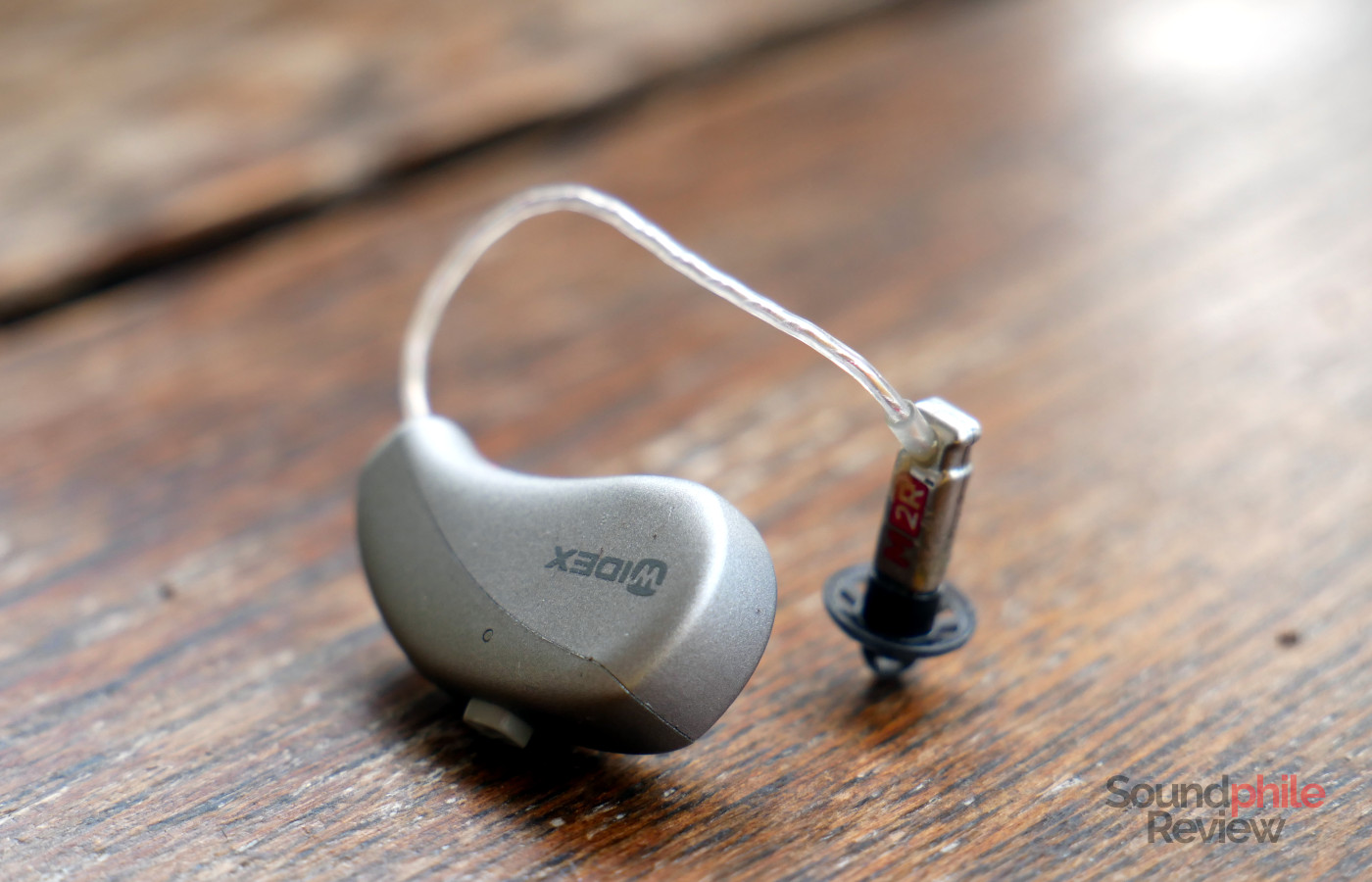
This could be also due to the fact that we’re not very good at remembering sounds. According to some studies, our echoic memory lasts about 5 seconds: it means that you can only really remember a sound as you heard it for about 5 seconds, after which time you have processed that input and lose the ability to remember it perfectly. That’s why, by the way, I never do any comparisons with headphones I can’t listen to side by side: because our brain really isn’t wired to give us such a detailed memory of what we hear that we can do stuff like that. Not without missing the mark by quite a good margin, at least. As humans, our experience is strongly dictated by vision, and hearing is something that helps (quite a lot!) but amounts to a secondary sense compared to sight.
This then brings us to the issue at hand: realising our hearing is getting worse is often extremely difficult because of the reasons we’ve just talked about, and it’s made even more difficult by the fact that our brain is a marvellous system that intervenes and tries to fill in the gaps, so we tend to realise we have a problem when we can barely hear anything – when people around us have to yell and constantly repeat what they say in order for us to correctly understand it. This leads to multiple issues, though, as the brain uses a lot of its computing power to do this and this leaves people tired and less inclined to having conversations and spending time with people. Over time, this leads to cognitive decline and, as age goes up, to a variety of issues.
Hearing aids were invented a long time ago – the first entirely analogical ones date back from the 17th century, while in early 1920s there were portable hearing aids (those looked a bit like modern walkie-talkies: the more modern in-ear models were introduced in the late 1980s). Despite this very long timescale, and despite so many people living with hearing loss, hearing aids are still considered by many as a major inconvenience or as a handicap. There is still social stigma around them. There are also technical limitations, so many people find them inadequate due to the delay that’s basically built into them, which creates sort of an echo when you use them. These things lead to many people not wanting to use a hearing aid, with all consequent issues.
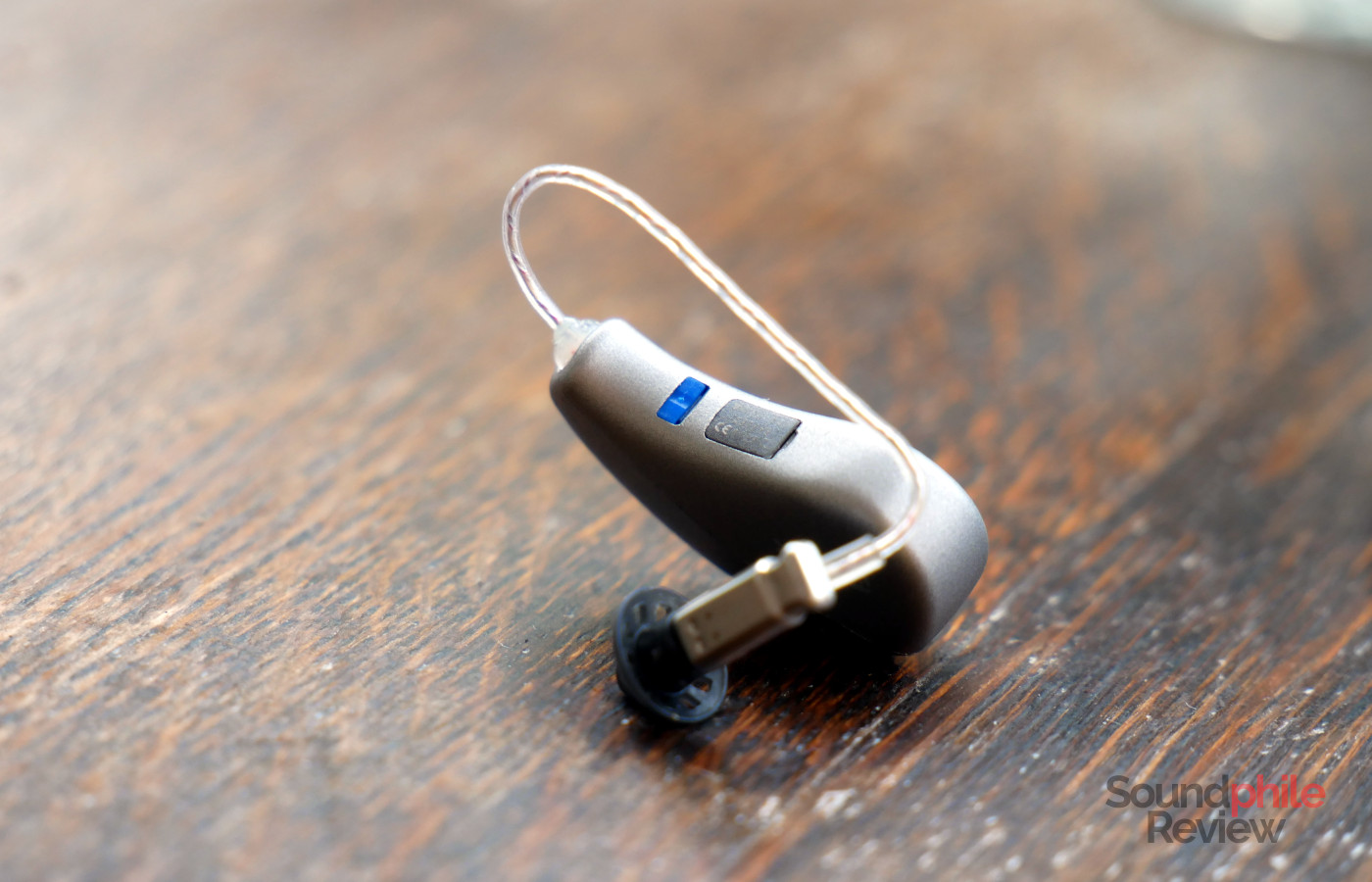
The Widex Moment is part of a new generation of hearing aids that aims to fix many of these issues. There are two main features that distinguish it from the alternatives: the use of AI to boost the frequencies involved in specific situations (think music, crowded places, quiet environments, etc) and the latency reduced to a minimum. In fact the Moment is the first hearing aid to offer a latency of less than 0.5 ms, which is low enough to trick our brain into not hearing the difference at all.
As I mentioned, I do not have a hearing loss (or, more correctly, not one that’s worth mentioning!), so I was really curious to hear how using the Widex Moment would affect my hearing, if at all. To my surprise, I could hear a small, yet important difference while wearing it: although in my daily life I could not really point to significant differences in the way I heard things, it happened to me to realise that the Moment was actually helping me hear better when I went into a restaurant full of people talking around me. Although the place wasn’t as full as it might have been, due to ongoing restrictions, there was enough people that I and the person I was there with had to raise our voices to make ourselves heard. The Widex Moment made it much easier to hear the other person despite the noise, and the difference was immediately evident when I tried to take it off. I experienced the same thing in other similar situations, when there was loud noise around me and it was hard to hear other people. A thing worth mentioning is that we were speaking English, which is not my mother tongue: this is relevant because when there’s lots of noise it is (much) harder to understand things in a language that’s not the one you grew up with, compared to your own native language. And yet, the Widex Moment made it quite easier to me and my performance was akin to that of listening to Italian.
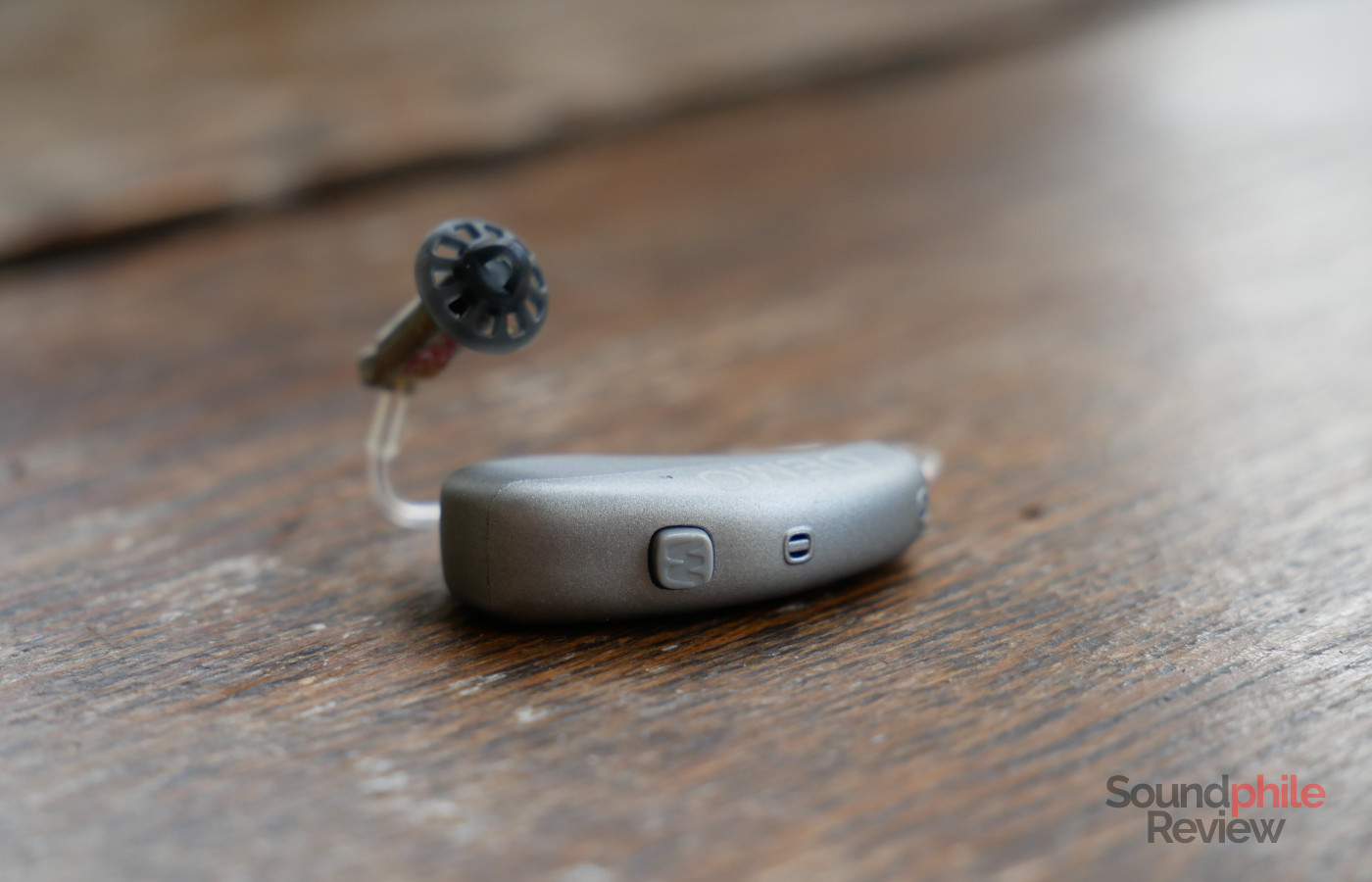
Just like most hearing aids, the Widex Moment requires an audiologist to do the initial calibration and adjustment, also called a fitting: every one of us has a different hearing profile and a unique hearing loss, so audiologists need to tailor the frequency response of the hearing aid to the specific need of the patient. This is a simple process that is often done directly in store.
Wearing the Widex Moment required a bit of adjusting. Not because it caused me any kind of fatigue or discomfort, because it basically disappeared the moment I put it on, despite my wearing glasses. What required adjusting was the fact that my hearing kept on picking up the high-pitched noise caused by the amplification stage inside the hearing aid. This was more noticeable in the “PureSound” mode (more on that later), but it was thankfully configurable through the equaliser in the application, so that reducing the volume of treble made the hiss disappear. Once I had done that, it was as if I wasn’t wearing the Moment at all, which is quite something: I did not expect a hearing aid to be so unobtrusive and good at reproducing the sounds from around me that it would disappear.
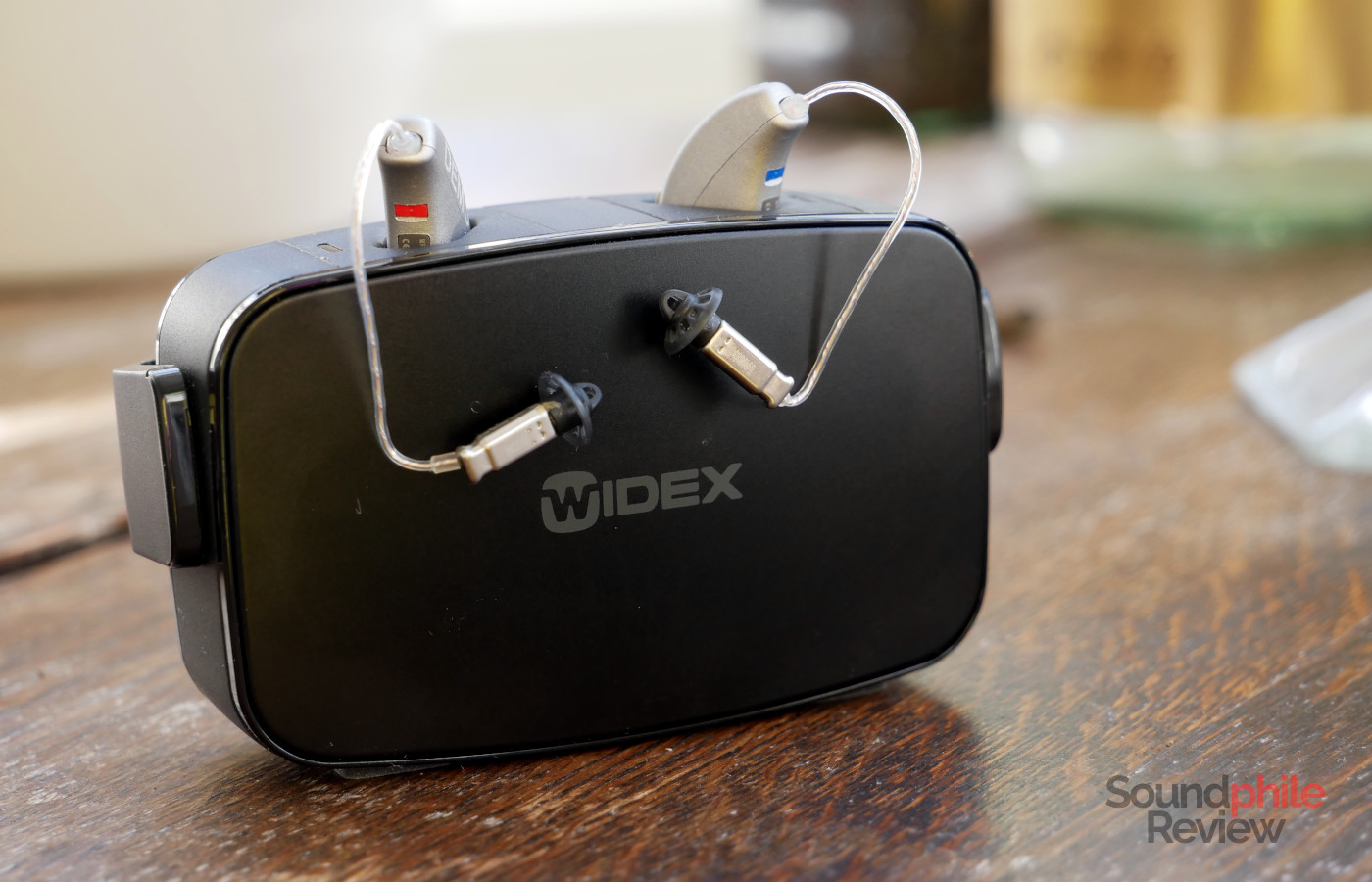
It’s also quite good with battery life: I’ve been able to wear the Moment for a full day without issues, which means I haven’t had to think about it at all. That can give you peace of mind when you’re using a hearing aid, which is really important to be well: my phone gives me a bit of anxiety as it often randomly decides to drain its battery very quickly and that has left me in unpleasant situations more than once, so I can only imagine the issues that would be linked with a rapidly-discharging hearing aid battery. Thankfully, in my experience the Widex Moment performs rather well in this department and it also charges up very quickly, with a full charge happening in less than half an hour.
The Widex Moment: let’s talk about it
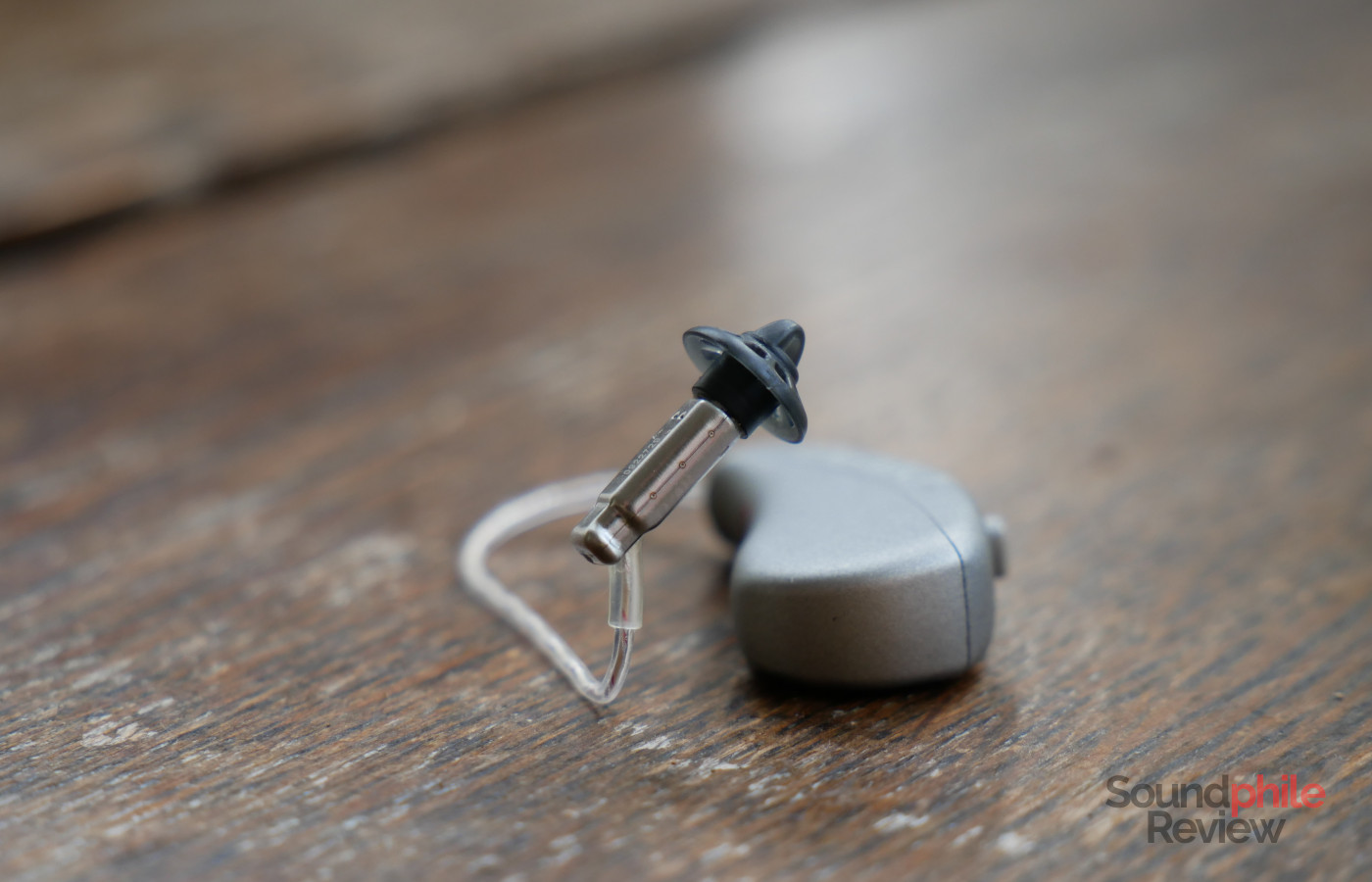
I have spoken to Jodi Sasaki-Miraglia, AuD, Director of Education and Professional Training for Widex to better understand how hearing aids work, what can be done to prevent hearing loss and how hearing aids can help people who face a loss of hearing. “There could be a number of reasons why you could be having hearing loss, no matter how old or young you are. A lot of what we’re seeing now is due to what we call noise exposure, so that is 100% preventable: the WHO just in 2019 said nearly 50% of people aged 25 to 35 years of age – that’s over a billion young people – is at risk of hearing loss due to noise exposure like hanging out at the disco too long, listening to headphones at a loud volume and so on. Not only is the level of loudness important in terms of protecting your hearing, but it’s the time that you are exposed to that. Of course for audiophiles, or musicians, or other people who enjoy listening to music, you can do that at a safe level without damaging your hearing. Unlike glasses, where people can say ‘oh, you can’t see far, or you can’t see near’, with hearing the challenge is that your ears don’t shrink and don’t bleed, so you don’t know that somebody has a hearing problem, [be they] young or old, until you start counting the ‘uh?’s, the ‘what?’s, and then you look at the TV volume and it used to be 20 bars, and now it’s 30 bars, and then it’s 45 bars…”
“What can you do to still enjoy music and do it in a way that is safe, so that when you turn 99 you can still listen to music, jam out and enjoy all the dynamics of music? First and foremost, it’s protecting your hearing by not having [music] too loud or, if you’re going to have it loud, by taking a break: your ears need a break just like you and I if we go for a run: you wouldn’t be able to sprint for an hour, you would be able to sprint for fifteen minutes. The ears are a living, breathing system and modern science has not yet figured out how to repair those damaged hair cells in humans. Once you start losing your hearing, it usually manifests itself in social environments, where there is background noise is where [people] usually notice they have hearing challenges, or when they listen to music they realise they don’t hear the higher registers any more, they don’t hear the overtones of the cymbals. Unfortunately the first area to go, anatomically, is the higher pitches. There is this bucket of sound when you have good hearing”, says Sasaki-Miraglia as she imitates the shape of a box with gestures, “so you can hear really soft sounds, really loud sounds, and then anything can fit in that huge box from a volume perspective and then from a pitch perspective. You’ve got bass and then treble. You have this big box that sound can fit in, and as we start losing our hearing, the first to go are soft sounds so the volume gets raised; from the pitch perspective, the pitch capacity starts to decrease, so that I have this much smaller box to fit all of these real-life sounds. This is why Widex tries to keep things as linear as possible, because too much squashing of sounds makes things not clear, makes music sound unnatural, so all of our parameters – our microphones, our receivers, our processing time, our filters that we use – are all designed to maximise that sound window for any user regardless of their hearing loss shape or degree. We have a laser focus to make sure sound quality is number one [priority].”
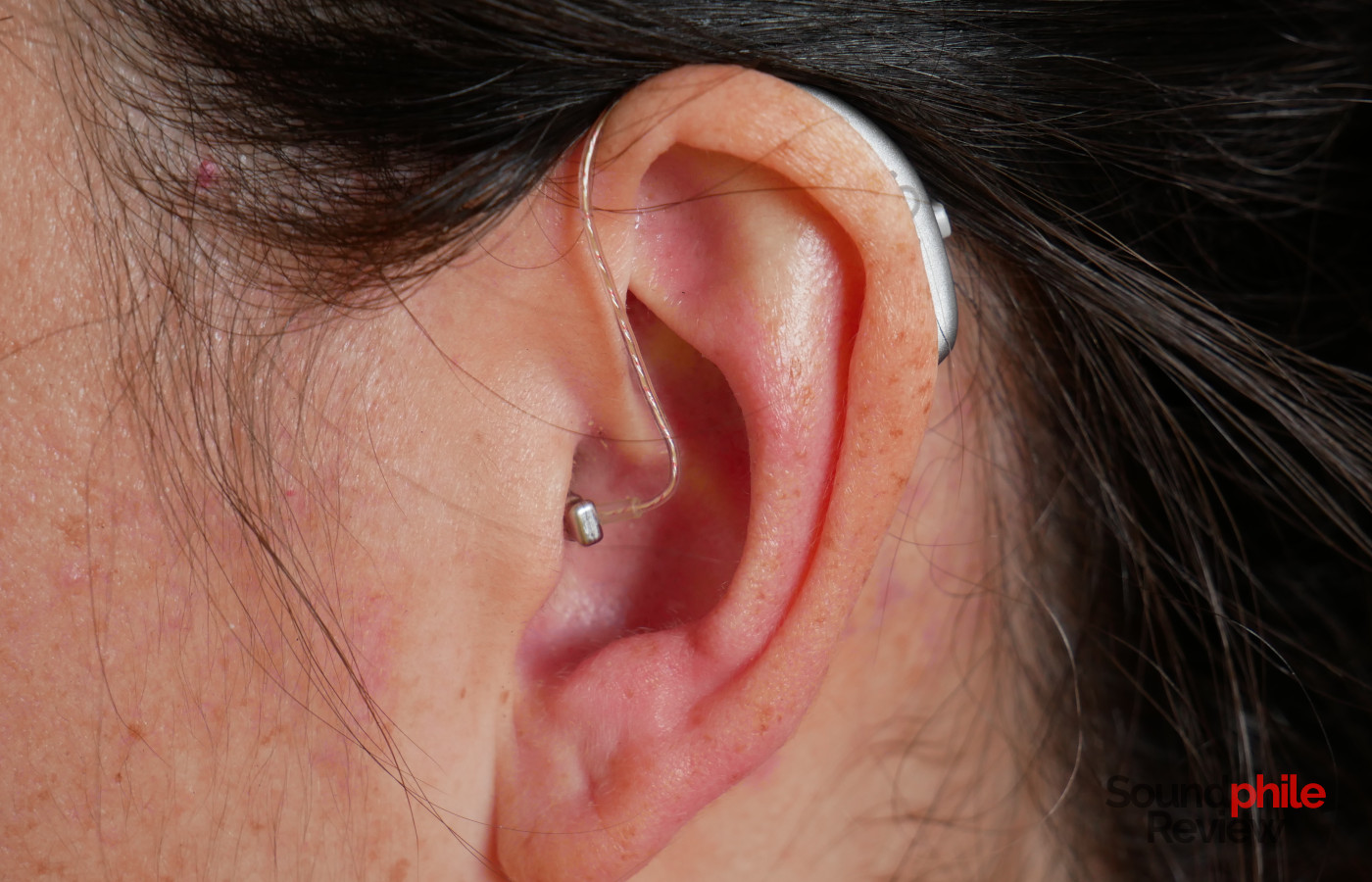
One of the issues that hearing aid manufacturers (and their customers) have to face is the mismatch in the time domain. While this may sound rather complicated, it’s actually quite easy: it means that when you wear a hearing aid, the sounds from outside still hit your eardrums as they would normally, but there’s also the sound produced by the hearing aid and if it arrives with too much of a delay, it can either create the impression of an echo or alter the original sound with overtones or undertones that make it unpleasant. “Normal hearing aids process the sound in five, six, eight milliseconds. The longer it takes to process, the more sound distortion is embedded in the hearing aid”, says Sasaki-Miraglia. “And what happens is that if I don’t like the sound, I’m not gonna wear [the hearing aid], and if I’m not gonna wear it, I’m gonna continue to argue with my spouse because the TV is too loud for everybody. And this creates a chain reaction of social non-participation, instead of putting you back into the social environment.” To solve this issue, the Widex Moment features a few different modes: the normal one, the music one and the so-called “PureSound” one. The PureSound mode aims to “correct that last bit of sound distortion [caused by time mismatch] that affect hearing devices and can deliver amplified sound in half a millisecond. That’s the fastest sound delivery to help not only treat hearing loss but also meet the needs of people who want good sound.”
This mode does indeed offer very low latency, to the point I can’t really hear any difference in terms of delay when it is enabled. Even listening to music with my speakers I cannot discern a change. That means that this mode could really help those who want to experience better sound even when they are facing hearing loss.
On top of that, Widex has used AI to identify different scenarios so that the hearing aid can adjust its performance based on the environment the user is in. This allows users to have a hearing aid that “just works”, so that they don’t have to constantly fiddle with it and just lead their lives as they would normally do. Not only this: according to Sasaki-Miraglia, “we are one of the only vendors that have a music-based AI algorithm, so that it can detect if it’s more contemporary-based music, so we will modify the frequency response for contemporary music, while for classical music we open up things more so that you can hear those really high and really low overtones that you want to hear.” I couldn’t experience that first-hand, meaning that I couldn’t hear any differences: that could be the intended result, though. The AI training happens through the Widex app, which is available for both Android and iOS, so that the users can send data to Widex to train their AI models and help create new scenarios that they can then use.
Now of course, this is all done because losing one’s hearing has a profound effect on one’s life, not only because it makes some activities less enjoyable or doable, but because it leads to a host of other issues. “What we see is that socially, once people start having communication challenges, they stop hanging out with friends, they don’t want to go to places where it’s going to be too noisy, hanging out socially isn’t enjoyable because you only get 20, 30, 40, 50 percent of what people say and it’s not fun or it’s more work. Your brain has to work overtime to fill in the gaps. So what we know now is that even with mild hearing loss there is two times the risk of cognitive decline, because the brain has to reorganise itself to fill in the gaps as the hearing part of your brain isn’t receiving information any more. So it’s important from a health perspective to get your hearing checked, but then it’s also what you can do to protect it. There are fantastic, very value-priced musician-grade earplugs that you can buy on the Internet. One of my favourite are made by a company called Etymotic [which Soundphile Review readers are going to know quite well – ed], they’re the ER20. They have a flat frequency response and I love them. It’s really easy to keep them on your keychain and bring them with you. I don’t know how many people would leave their house without their cell phones, so we shouldn’t leave our houses without our cellphones and hearing protections, that’s how important that is.”
My sensation is that there is not enough awareness about hearing and hearing loss, even though the situation is improving. Is it really like that? “There is definitely not enough awareness. If you look at what age you got your eyes tested to get glasses [five years old, in my case – ed] or what age you went to the dentist to get your teeth checked, somehow ears are left off that list. And yet it’s the one thing that allows all of us to stay connected and communicate and all of us realise how important our ears are when we all have to mask up [to protect ourselves from COVID] as that’s the first thing to be affected, the sound quality coming out of people’s masks. There definitely needs to be more public awareness, first about how hearing is an important sense in addition to your smell, your vision and your touch; secondly we know that hearing is important so let’s do periodic checks on that. There are protocols to check newborn babies for hearing impairments, so why don’t we do that with adults? Why don’t we get our hearing checked every decade at a minimum? More importantly, we need to protect our hearing. As an audiologist I’m never going to be out of work, and that’s not a good thing. It’s hugely preventable, so why not do it?” As we say in Italy: prevenire è meglio che curare, to prevent is better than to cure.
A simple yet elegant solution
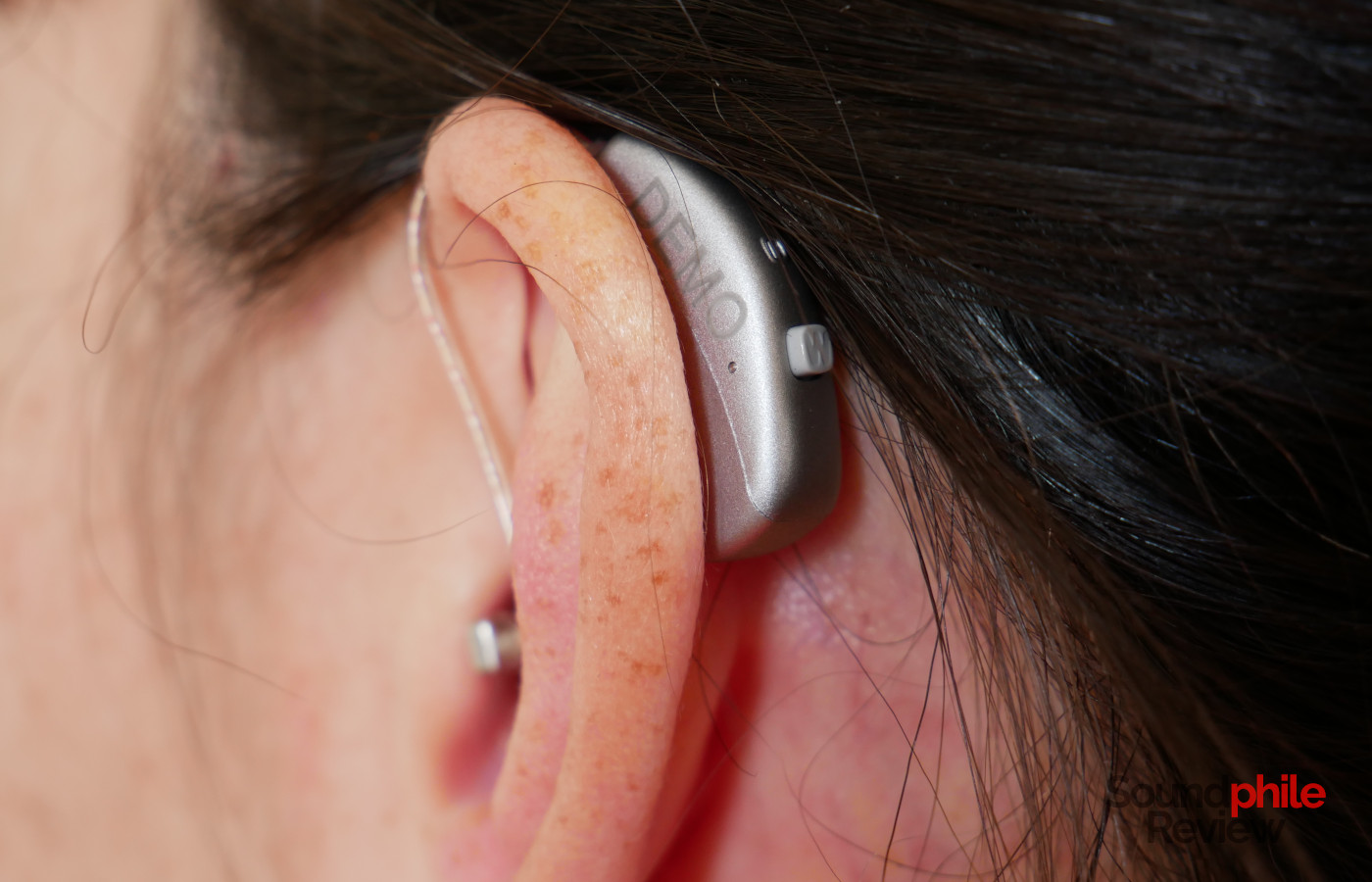
All in all, my experience with the Widex Moment has been quite positive. It is an astounding piece of technology that is so good I could barely realise it was there, after the initial period of adjustment. But that’s exactly the point of this type of device: to disappear, to fade into the background to allow us to live a better, fuller life. I can’t think of a negative thing to say about the Moment: it matched or even surpassed my expectations in more than a way and in more than a setting. It is just great and I loved the ease of use of the application on my smartphone, which allowed me to tailor the Moment to my needs and take advantage of all the smart features it offers.
Given my hearing is good, I am not entirely sure that my experience with the Widex Moment can be relatable for those who have a hearing loss. But I can attest that some of the main selling points of this device, like the speed at which it delivers sound and its ability to use AI to help you better hear in various situations, are indeed true. From my admittedly limited perspective as a non-expert, I think this can be quite a great thing as it would allow many more people to experience sound, and therefore life, in a way that gives them more satisfaction – ultimately leading to better quality of life. A hearing aid, however good it is, is not a silver bullet that’s going to magically fix all issues, but it can surely help make things much better. Just like prescription glasses, antidepressants and a whole lot of other conquests of modern science.
Thanks to Widex Moment and to their PR, Tom, for loaning a unit to me so that I could write this piece. Additional information is available on the official website.

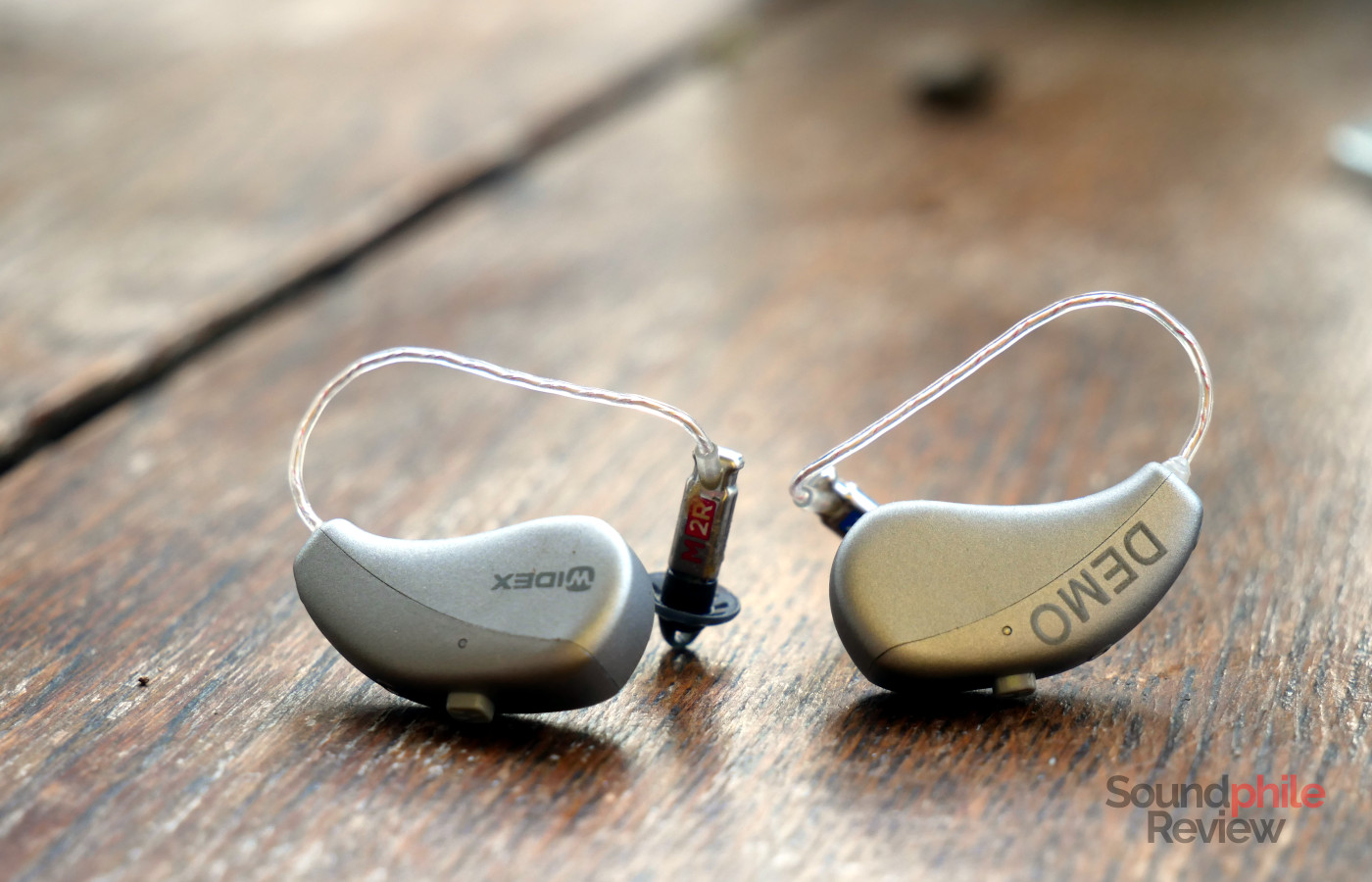


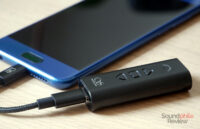
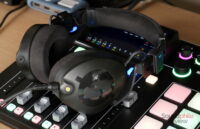
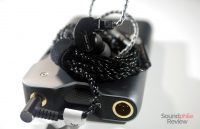


Hi Riccardo, congratulations for the really well done site !!
Since you are using hearing aids, how did you happen to try any of the Sennheiser models headphones? I have heard good things about them from those who wear hearing aids (I wear hearing aids myself, but I have no experience with headphones). Thanks and congratulations again
Marco
Hello Marco,
Thanks for your kind words! Unfortunately I don’t have the hearing aids any more and I didn’t think of trying headphones while wearing them, so I won’t be able to offer advice on how this combination might work. As for Sennheiser, I generally really like their products and I do recommend them if you’re looking for a balanced, (mostly) neutral signature. I hope I’ll be able to offer more reviews of their headphones in the future.
This review is a find. It touches on headphones, memory, and sound shapes besides just the Moment, its AI, and the equalizer adjustments in the App. In total, this particular audio review/blog on the Moment makes me want to look-up and read your other postings. I did do a quick search to see if you also reviewed any Oticon models. That would have been good though it is a moot point for me, as to what the seller hereabouts prefers.
It’s appreciated that hearing loss is mentioned as both the ages and the causes for when it starts. Saying that there is a social stigma associated with wearing hearing aids is spot on and has got to be in part why I resisted getting them for so long. That of course and the price (GULP).
Mr. Robecchi you say early on you are losing your hearing, but brush it off to the natural process where everybody is aging. You say you have very good hearing for your age. Did you go to an audiologist in preparation for this review?
No shooting ranges or heavy metal concerts for me either but bad ear-aches from a preschool age did some damage and I’ve always known that. There is no denying that age is also a factor. I’m 71. Even so I thought my hearing was still pretty good though the Audiologist and my wife disagree.
I have had my very first hearing aids, Widex Moment, since June 16th 2022, so as of now, 9 days. That hopefully explains why all my comments are surface without the depth of long term use or having had multiple kinds of hearing aids over the years. Your coverage of the exact model I bought is much appreciated. I admit to being glad I don’t have the years of aggravation for decades where hearing aids were larger, clunky, and technically just inferior to the models available today.
I have done well enough over the years listening, editing sound, appreciating the fine points of headphones, and living my life. It still makes me wonder if I would have learned a little better and asked others to repeat a little less.
I’m just getting used to these amazingly totally invisible hearing aids. The unit is wonderfully small and matches my skin; the thin wire matches my hair which I comb just a little less careful; and the RIC properly goes in far enough to be very unseen.
It is great the App lets me set the better ear to a volume of 4 and the other to 5. If the settings were finer, like 4.5 it would have been even better. Maybe that will happen in an App update. These aids are new so the feeling hasn’t progressed beyond at all times knowing there is something stuck in my ear. Please let that pass.
Hi, I am using hearing aids for 17yrs. Last 5 yrs. made by Widex. I just got new “Moment 440” and working on setting the best program for me.I must tell all who are considering or using hearing aids, you have to find EXPERIENCED audiologist to fit your aids. They have to match your needs and your hearing loss!
Ask other users, your friends or coworkers, don’t go for cheap or close by places. Always ask for getting full comprehensive
hearing test.
Which model Widex Moments did you try?
It was the Widex Moment RIC 312 D, if I am not mistaken.